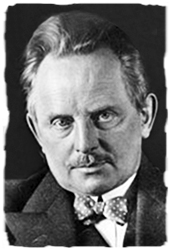Oskar Barnack was the father of 35mm
photography and inventor of Leica cameras. Initially working
for Leitz developing their motion picture cameras, he saw the
possibility of producing a small still camera utilizing motion
picture film. At the time most cameras used large glass plates
and therefore were big and heavy and need to be used on a tripod.
Oskar suffered from asthma and carrying and
using a large camera was out of the question. He invented his
small camera which he could easily take with him while out walking.
The small negative size meant that it would have to be enlarged to
produce a print, unlike plate cameras from which prints could be
produced by contact printing. Therefore the lenses had to be
excellent.
The Leica I camera was
introduced in 1925. The name Leica derives from
Leitz cameras.
The main philosophy was to produce a small camera with outstanding
lenses capable of producing sharp images.
In 1932 the Leica II was introduced. This
was the first camera to have a built in rangefinder and was a true
“systems” camera with a range of interchangeable lenses and
accessories – something that is taken for granted today.
Oskar Barnack died in 1936 just as the real
potential of his vision, of producing a small camera using 35mm
film, was being realized. His Leica cameras revolutionized
photography and set the standard for what we have today. Small
is beautiful.
